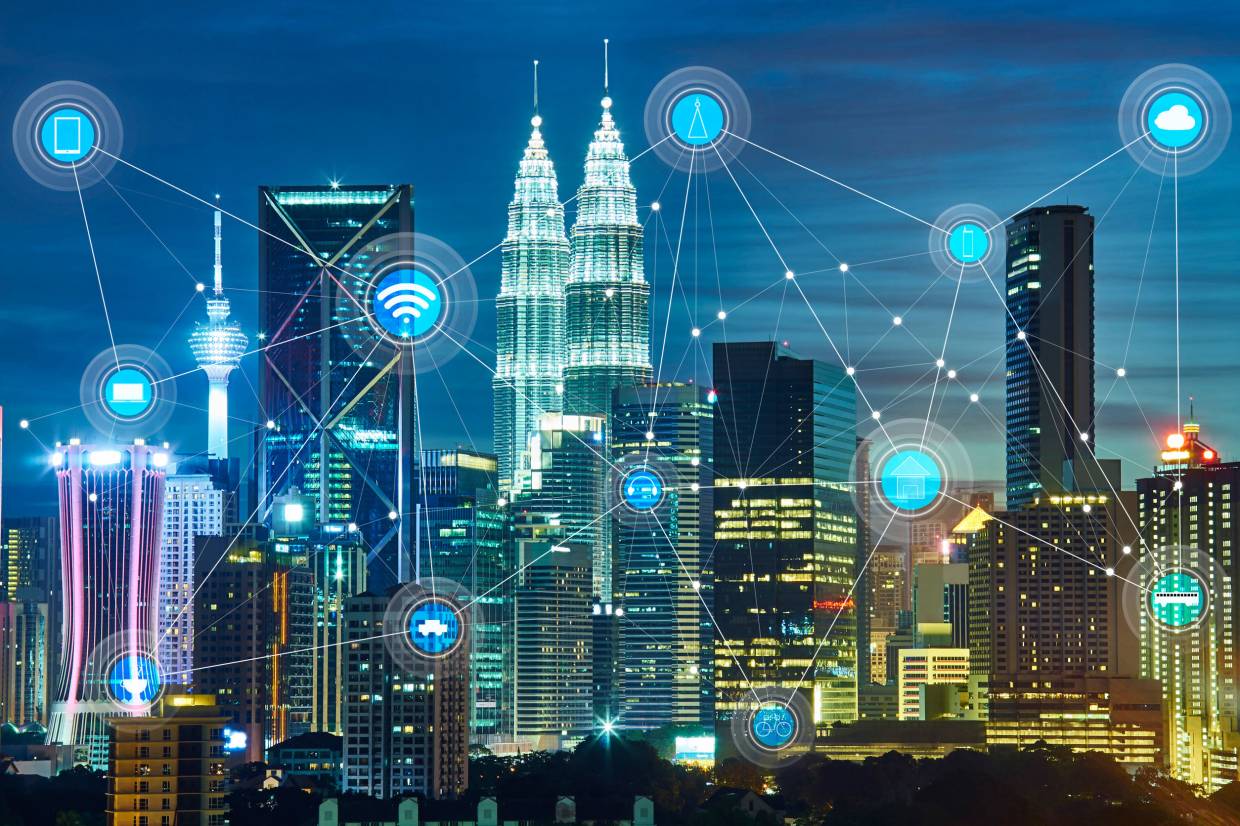5G? What about the 4G digital divide?
07 February 2020
DESPITE the government’s efforts to bridge the digital gap between the urban and rural areas in Malaysia, a study shows that the disparity is still wide.
According to mobile analytic firm Opensignal, a connectivity gap exists between sparsely populated rural and densely populated urban areas which reportedly is home to more than 70% of the country’s population.
The study suggests that there is a strong correlation between the time its users spent connected to mobile networks and the population density in Malaysia – the lower the population density, the lower the 4G availability.
In the most densely populated areas, namely Klang Valley, Johor Baru and Penang, the users could connect to the 4G networks 83.7% of the time.
However, in the most sparsely populated districts in Sabah and Sarawak, users spent just 44% of their time on 4G networks.
‘Those districts have a higher proportion of rural areas, where operators usually find it more challenging to deploy and maintain the required network infrastructure,” the report states.
When Opensignal examined the time users spent connected to all mobile data networks, taking into account both 3G and 4G, the gap between urban and rural areas diminished.
In October, during a Dewan Rakyat session, Communications and Multimedia minister Gobind Singh Deo shared that the Malaysian Communications and Multimedia Commission (MCMC) has upgraded over 5,000 existing communications tower locations to 3G and 4G services.
He added that over 50 more tower locations are in the process of being upgraded.
“As of August this year, a total of 2,397 new communications towers were fully operational in rural areas nationwide and another 249 new communications towers were in the implementation stage,” said Gobind in a Bernama report.
“The government always gives focus to the development of comprehensive communications infrastructure which includes providing more comprehensive, stable and quality broadband coverage, especially in rural areas, ” he said in reply to Arthur Joseph Kurup (PBRS-Pensiangan) during Ministers’ question time.
In a separate event in Putrajaya, Gobind reiterated that Malaysia will not be left behind in the 5G race, despite some parts of the country still not having 4G, 3G or even 2G coverage.
He explained that the government is in the midst of bringing the infrastructure to all parts of Malaysia, and that it can be done while embracing 5G technologies.
Until the 5G networks are fully rolled out, Opensignal states that 4G will remain the optimal connectivity option for users, in addition to 3G and 2G networks.
Gobind had previously announced that 82% or 702 Orang Asli villages in Malaysia were already connected via 3G coverage, and that the upgrading of broadband services in these areas will be implemented and completed in stages by 2030.
“In 2020, we expect that 5G users will be able to experience a consistent HD video stream more often and in more locations than in 2019. However, this is dependent on the availability of this critical mid-band spectrum,” said Opensignal CEO Brendan Gill in a statement.
Opensignal notes that the Malaysian government is taking initiatives to close the digital gap in Malaysia. One being the National Fiberisation and Connectivity Plan (NFCP) launched in September, which aims to expand Internet reach to all populated areas in the country.
The five year plan is estimated to cost RM21.6bil, with about RM11bil to come from the Universal Service Provision (USP) fund that is collected from telecommunication service providers every year. The rest will be funded by the private sector.
Gobind is expected to announce in January next year the companies that will be awarded the license for NFCP 1 development, which will be selected through a tender process.
NFCP 1 involves 153 locations in 94 mukim in eight states: Johor, Kedah, Kelantan, Negeri Sembilan, Pahang, Perak, Terengganu and Sabah.
The selected licensees will be required to install network facilities capable of delivering 3G and 4G cellular connectivity with an average speed of 30Mbps (megabits per second).
Until further investment in rural areas are made, Opensignal believes that Malaysian consumers in underpopulated areas will continue to depend on older, slower network technologies like 2G and 3G to access Internet services.
Note: To measure the gap, Opensignal classified 144 districts in 13 states and three federal territories into five distinct categories based on their population densities: Category 1 (up to 10 people per sq km); Category 2 (10 to 50 people per sq km); Category 3 (50 to 100 people per sq km); Category 4 (100 to 300 people per sq km); and Category 5 (more than 300 people per sq km).
Source: TheStar
According to mobile analytic firm Opensignal, a connectivity gap exists between sparsely populated rural and densely populated urban areas which reportedly is home to more than 70% of the country’s population.
The study suggests that there is a strong correlation between the time its users spent connected to mobile networks and the population density in Malaysia – the lower the population density, the lower the 4G availability.
In the most densely populated areas, namely Klang Valley, Johor Baru and Penang, the users could connect to the 4G networks 83.7% of the time.
However, in the most sparsely populated districts in Sabah and Sarawak, users spent just 44% of their time on 4G networks.
‘Those districts have a higher proportion of rural areas, where operators usually find it more challenging to deploy and maintain the required network infrastructure,” the report states.
When Opensignal examined the time users spent connected to all mobile data networks, taking into account both 3G and 4G, the gap between urban and rural areas diminished.
In October, during a Dewan Rakyat session, Communications and Multimedia minister Gobind Singh Deo shared that the Malaysian Communications and Multimedia Commission (MCMC) has upgraded over 5,000 existing communications tower locations to 3G and 4G services.
He added that over 50 more tower locations are in the process of being upgraded.
“As of August this year, a total of 2,397 new communications towers were fully operational in rural areas nationwide and another 249 new communications towers were in the implementation stage,” said Gobind in a Bernama report.
“The government always gives focus to the development of comprehensive communications infrastructure which includes providing more comprehensive, stable and quality broadband coverage, especially in rural areas, ” he said in reply to Arthur Joseph Kurup (PBRS-Pensiangan) during Ministers’ question time.
In a separate event in Putrajaya, Gobind reiterated that Malaysia will not be left behind in the 5G race, despite some parts of the country still not having 4G, 3G or even 2G coverage.
He explained that the government is in the midst of bringing the infrastructure to all parts of Malaysia, and that it can be done while embracing 5G technologies.
Until the 5G networks are fully rolled out, Opensignal states that 4G will remain the optimal connectivity option for users, in addition to 3G and 2G networks.
Gobind had previously announced that 82% or 702 Orang Asli villages in Malaysia were already connected via 3G coverage, and that the upgrading of broadband services in these areas will be implemented and completed in stages by 2030.
“In 2020, we expect that 5G users will be able to experience a consistent HD video stream more often and in more locations than in 2019. However, this is dependent on the availability of this critical mid-band spectrum,” said Opensignal CEO Brendan Gill in a statement.
Opensignal notes that the Malaysian government is taking initiatives to close the digital gap in Malaysia. One being the National Fiberisation and Connectivity Plan (NFCP) launched in September, which aims to expand Internet reach to all populated areas in the country.
The five year plan is estimated to cost RM21.6bil, with about RM11bil to come from the Universal Service Provision (USP) fund that is collected from telecommunication service providers every year. The rest will be funded by the private sector.
Gobind is expected to announce in January next year the companies that will be awarded the license for NFCP 1 development, which will be selected through a tender process.
NFCP 1 involves 153 locations in 94 mukim in eight states: Johor, Kedah, Kelantan, Negeri Sembilan, Pahang, Perak, Terengganu and Sabah.
The selected licensees will be required to install network facilities capable of delivering 3G and 4G cellular connectivity with an average speed of 30Mbps (megabits per second).
Until further investment in rural areas are made, Opensignal believes that Malaysian consumers in underpopulated areas will continue to depend on older, slower network technologies like 2G and 3G to access Internet services.
Note: To measure the gap, Opensignal classified 144 districts in 13 states and three federal territories into five distinct categories based on their population densities: Category 1 (up to 10 people per sq km); Category 2 (10 to 50 people per sq km); Category 3 (50 to 100 people per sq km); Category 4 (100 to 300 people per sq km); and Category 5 (more than 300 people per sq km).
Source: TheStar










 Whatsapp Us +6011 1144 5462
Whatsapp Us +6011 1144 5462



